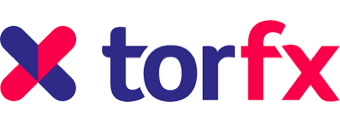Aussie dollar hits another high: what are my best money transfer moves?

Despite fears of another Aussie dollar crash, the AUD has continued to hold its ground over the past few weeks and gain strength against the US dollar.
In late July, the Australian dollar broke past 70 US cents for the first time in 15 months, and since then it’s been tracking steadily above that threshold.
As of today, 19 August, the AUD/USD exchange rate sits at 0.724699 - around 72 US cents for every Aussie dollar.* That’s far above its plunge to 55 US cents back to mid-March, and it even surpasses pre-pandemic levels of 66 US cents.
OFX’s head of Australia and New Zealand, Michael Judge says this positive trend is partly due to a weakened US dollar, as the latter currency bears the brunt of political and economic headwinds.
For one, the US has been battling daily flare-ups in COVID-19 cases as its coronavirus response lags far behind other wealthy countries. Then there’s the reality of government fiscal support running out very soon, as well as escalating US-China trade tensions, all of which have dulled the shine of this safe haven currency.
Judge adds that besides USD weakness, the Aussie dollar has also been benefitting off the back of high commodity prices. For instance, in late July, gold prices reached a level 1% shy of a nine-year high.
“The strength of iron ore, copper, gold and wheat have played a really big role in supporting the Aussie,” he says.
Specifically it’s helped to mitigate some concerns around demand after China fired a few shots at Australia’s economy in May, by imposing tariffs on barley imports, then two months later, by increasing the import duty for Australian made beef.
As Judge explains, “China makes up 30% of Australia’s export market but close to 25% of that export market is tied to commodity dependency… [so] very rarely would you see a lower Aussie if commodity prices are rising.”
Volatility returns
But it’s not all favourable news for the Aussie dollar.
“There’s going to be a fair few jitters in the landscape, whether it’s the US-China trade debate, COVID-related or the US election. These are all things which frankly could derail an assessment over the Aussie right now,” Judge says.
Unlike the usual case where just one risk - say, Brexit or the Global Financial Crisis (GFC) - dominates the market for an extended period of time, the Aussie dollar is currently up against three or four potential sources of risk.
“In this environment, risks are absolutely elevated, which is to say volatility has returned,” Judge says.
Volatility refers to significant currency fluctuations which take place unpredictably. For example, right after COVID-19 was declared a pandemic, investors flocked to safe haven currencies like the USD in droves, resulting in an AUD crash to a 17-year low.
“As we saw in that first phase of the COVID response, markets were acting quite rationally and there was a degree of complacency setting in. But as soon as there was an event, we saw the dismantling of markets and a real disruptive behaviour,” Judge explains.
He says a similar occurrence isn’t off the table.
“When there’s uncertainty, whether it’s an [impending] political outcome or a threatening economic outlook, you obviously see a little bit of retreat from participation,” Judge says.
“But if people are retreating, the reality is that when they do participate … you’re going to see delivery of all that pent up demand in a very short period of time and you’re going to see a real jolt.”
How to protect your international money transfer
With heightened risk in the market, it’s uncertain whether the strong Aussie dollar is here to stay or not. So to safeguard your personal or business money transfer from volatility, Judge recommends using a combination of foreign exchange tools. In other words, avoid putting all your eggs in one basket.
Many money transfer specialists like OFX, TorFX and WorldFirst offer foreign exchange tools including:
- Forward contract: This allows you to secure today’s exchange rate for a future transfer, up to two years in advance.
- Limit order: This lets you set a target rate and your IMT provider will automatically move funds for you once that rate has been triggered.
- Spot transfer: This is where you lock in a current rate and make the transfer on the spot.
“The benefit of using a forward contract in conjunction with a limit order or spot transfer is that limit orders and spot transfers can be used to participate in favourable markets, whereas forward contracts can be used to defend or provide certainty in highly volatile markets,” Judge explains.
That way, you give yourself the best of both worlds - you aren’t forced to partake in the currency market when exchange rates are poor, but you also have the freedom to take advantage of any better rates that may arise.
This can help you “achieve an exchange rate outcome which is satisfactory over a long period of time,” Judge says.
But even with competitive AUD/USD exchange rates up for grabs right now, it pays to shop around to find the best money transfer deal for you.
Scroll down below for a snapshot of what’s on offer or jump over to our international money transfers comparison table for more currency options.
*Mid-market exchange rate, drawn from the XE Currency Converter as of 9.24am, 19 August 2020.
I want to transfer
Today’s foreign exchange rates
- Excellent exchange rates, no transfer fees
- 24/7 transfers online, over the phone or through the TorFX app
- Personal account management and expert insights
$6,509 USD
$0.6509 USD
1-2 days
$200 minimum
- Send to 200+ countries and 100+ currencies globally
- Dedicated Australia-based client services team with personal account management for transfers over $20,000
- 48,000+ 5-star 'Excellent' ratings on TrustPilot
$6,496 USD
$0.6496 USD
1-3 days
none
- Transact online 24/7 with fast settlement & extremely competitive rates.
- Quick and easy account setup, supports multiple payment methods including debit/credit card, bank transfers and wire transfers.
$6,496 USD
$0.6496 USD
Within minutes
$0 minimum
- Competitive exchange rates and low fees to pay
- Enjoy instant transfers between Revolut users
- Go global and send to 100+ countries in 40+ currencies
$6,516 USD
$0.6516 USD
Immediate
none - AUD $2,000 per month limit on fee free transfers on the Standard subscription tier
- Fee Free transfers
- Talk to a human, 24/7. Sharp Rates and Fast and Secure transfers.
- Australian owned, ASX listed and Official Foreign Exchange Provider of the NHL
$6,494 USD
$0.6494 USD
1-2 days
$250 minimum
$500 monthly minimum for regular transfers
* The exchange rates offered by each provider are indicative exchange rates that have either been supplied by each provider or gathered by Mozo. Exchange rates fluctuate constantly and as a consequence the exchange rates listed here may vary to the actual exchange rate you are quoted by a provider. Please ensure you confirm the actual exchange rate with the relevant provider prior to conducting any transaction. These exchange rates are updated every hour.
^See information about the Mozo Experts Choice International Money Transfer Awards
Mozo provides general product information. We don't consider your personal objectives, financial situation or needs and we aren't recommending any specific product to you. You should make your own decision after reading the PDS or offer documentation, or seeking independent advice.
While we pride ourselves on covering a wide range of products, we don't cover every product in the market. If you decide to apply for a product through our website, you will be dealing directly with the provider of that product and not with Mozo.





